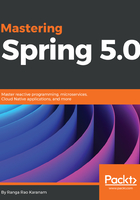
上QQ阅读APP看书,第一时间看更新
Java modularity with Jigsaw
Until Java 8, the Java platform was not modular. A couple of important problems resulted out of this:
- Platform Bloat: Java modularity has not been a cause of concern in the last couple of decades. However, with Internet of Things (IOT) and new lightweight platforms such as Node.js, there is an urgent need to address the bloat of the Java platform. (Initial versions of JDK were less than 10 MB in size. Recent versions of JDK need more than 200 MB.)
- JAR Hell: Another important concern is the problem of JAR Hell. When Java ClassLoader finds a class, it will not see whether there are other definitions for the class available. It immediately loads the first class that is found. If two different parts of the application need the same class from different jars, there is no way for them to specify the jar from which the class has to be loaded.
Open System Gateway initiative (OSGi) is one of the initiatives, started way back in 1999, to bring modularity into Java applications.
Each module (referred to as bundle) defines the following:
- imports: Other bundles that the module uses
- exports: Packages that this bundle exports
Each module can have its own life cycle. It can be installed, started, and stopped on its own.
Jigsaw is an initiative under Java Community Process (JCP), started with Java 7, to bring modularity into Java. It has two main aims:
- Defining and implementing a modular structure for JDK
- Defining a module system for applications built on the Java platform
Jigsaw is expected to be part of Java 9 and Spring Framework 5.0 is expected to include basic support for Jigsaw modules.